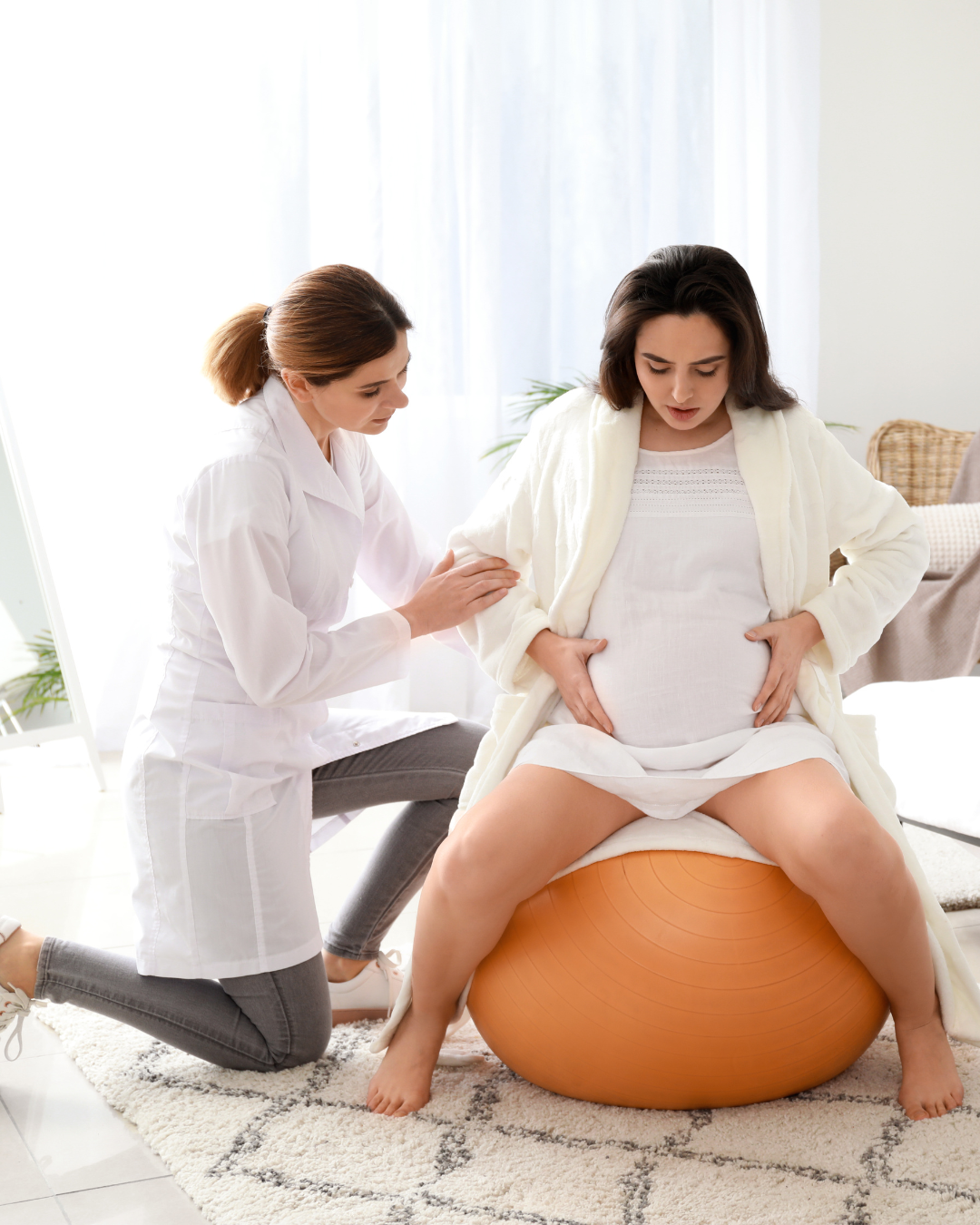During this morning’s class, one of the students proudly announced that today was her due date. She was anxiously awaiting the start of her labor and excited to meet her baby. (I think there was equal excitement about the idea of not being pregnant anymore!) She then went on to say that her doctor has set an induction date for 8 days after her due date. She expressed great concern that she would not go into labor naturally and end up with a medical induction, a situation which she was hoping to avoid. I explained that there are several natural methods to help start labor that are worth investigating if she was interested.
Coming from the standpoint of a certified Lamaze Childbirth Educator, I strongly believe that we should wait for labor to start on its own. The very first of the Lamaze 6 Healthy Birth Practices is labor begins on its own. It has been well documented that once medical intervention starts, a cascade effect is in motion which will often lead to the necessity of more and more medical procedures and intervention.
Of course, there are very valid reasons for which a medical induction is necessary. For example, if the mother has diabetes, high blood pressure, the mother or baby is in distress, the mother has reached 42 weeks, or the fluids have ruptured and labor has not begun after several hours. Note: Convenience is NOT on this list! Suspecting a large or very large baby is also not a medical reason for induction. In a November 2002 press release, ACOG reported that induction of labor for macrosomia (large baby) almost doubled the cesarean rate without improving perinatal outcomes (the health of the baby).
If your reason for induction is not a medical emergency, and you have time, here are a few methods that may help move things along. I strongly urge you not to dabble in the more aggressive methods unless you really are at risk for a medical induction and that you consult your care provider before proceeding. Also keep in mind that a lot of these methods will not work unless your body is ready.
Sex: The release of semen onto the cervix can aid in softening it since it contains the hormone prostaglandin. Also, the body releases oxytocin during orgasm and nipple stimulation. This is the same hormone that contracts the uterus during labor. So, between the two, you have a good chance of moving things along!
(Please note- this is not a good option to try if your membranes have ruptured)
Acupuncture: There was a study done through the Department of Obstetrics and Gynecology at the University of Vienna, Austria to evaluate whether acupuncture at term can influence cervical ripening, induce labor and thus reduce the need for postdates induction. Conclusion: Acupuncture at points LI4 and SP 6 supports cervical ripening at term and can shorten the time interval between the EDC and the actual time of delivery.
As Francis Goodwin, LAC states, Acupuncture inductions do not stress the fetus the way synthetic hormonal inductions can. This is definitely an alternative I would recommend before submitting to a medical induction.
Evening Primrose Oil: If you are not feeling up for a little romp around the bedroom, evening primrose oil may have the same effect since it contains prostaglandin. After 36 weeks, it can be applied directly to the cervix to help it ripen. If you do not feel comfortable inserting anything directly into the body, you can take the evening primrose oil orally. If you are interested in taking this, the recommended dosage is 2,500mg capsules a day. *** DO NOT insert the oil if your membranes have ruptured!!!
Castor Oil: The idea behind the use of castor oil is that it helps quickly empty the intestines. This can sometimes help trigger uterine contractions. I have successfully used this method with some clients. I recommend one tablespoon of castor oil mixed with orange juice and vodka.
If the idea of castor oil doesn’t sound appealing, try eating a lot of licorice, the real licorice candy, the black kind, especially Panda brand, which is definitely real licorice, or Bassett’s Allsorts, which might be tastier. Licorice contains the chemical, glycyrrhizin, which stimulates the production of prostaglandins. In addition, eating lots of licorice might cause a mild diarrhea, and intestinal contractions can cause sympathetic uterine contractions.
Stripping the Membranes: This procedure is done by the doctor or midwife inserting two fingers inside the cervix and separating the amniotic sac from the cervix. This may stimulate the body’s natural production of prostaglandin. In two studies, sweeping the membranes successfully induced labor in half the cases attempted.
Uterine Stimulating Herbs: Black cohosh (Caulophyllum) and blue cohosh (Cimificugua). I am not an herbalist or homeopathic doctor, so my knowledge of these herbs is remedial. If you are interested in an herbal supplement to stimulate your labor, I would recommend contacting a specialist in this area. The reason I include this suggestion is to make you aware that this is an option, but I also stress that the use of these herbs should be supervised.
Relaxation: You can try all of the methods listed above, but if you are stressed and tense, chances are they won’t produce the desired effect. Your body needs to be relaxed and calm for it to open. Maybe this is why so many women start labor in the middle of the night. Try taking a warm bath, catch a movie, stroll through the park or come to a prenatal yoga class! Anything that quiets the mind will be helpful.
I hope that you found this list of alternative methods helpful and that you have a beautiful labor!
¹ Gaskin, Ina May. Ina May’s Guide to Childbirth. Pg 216.






